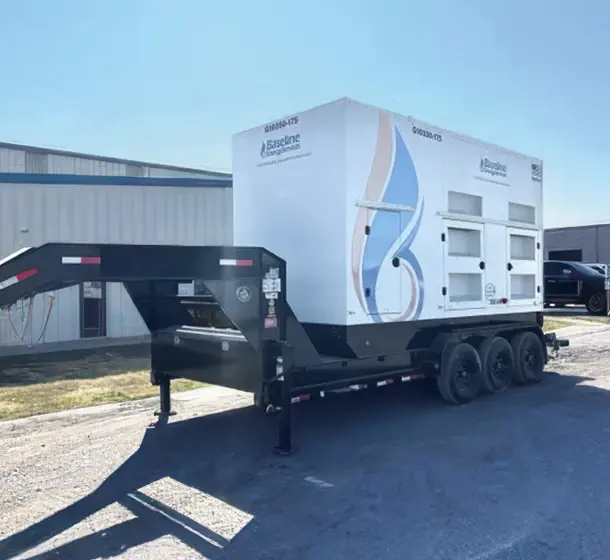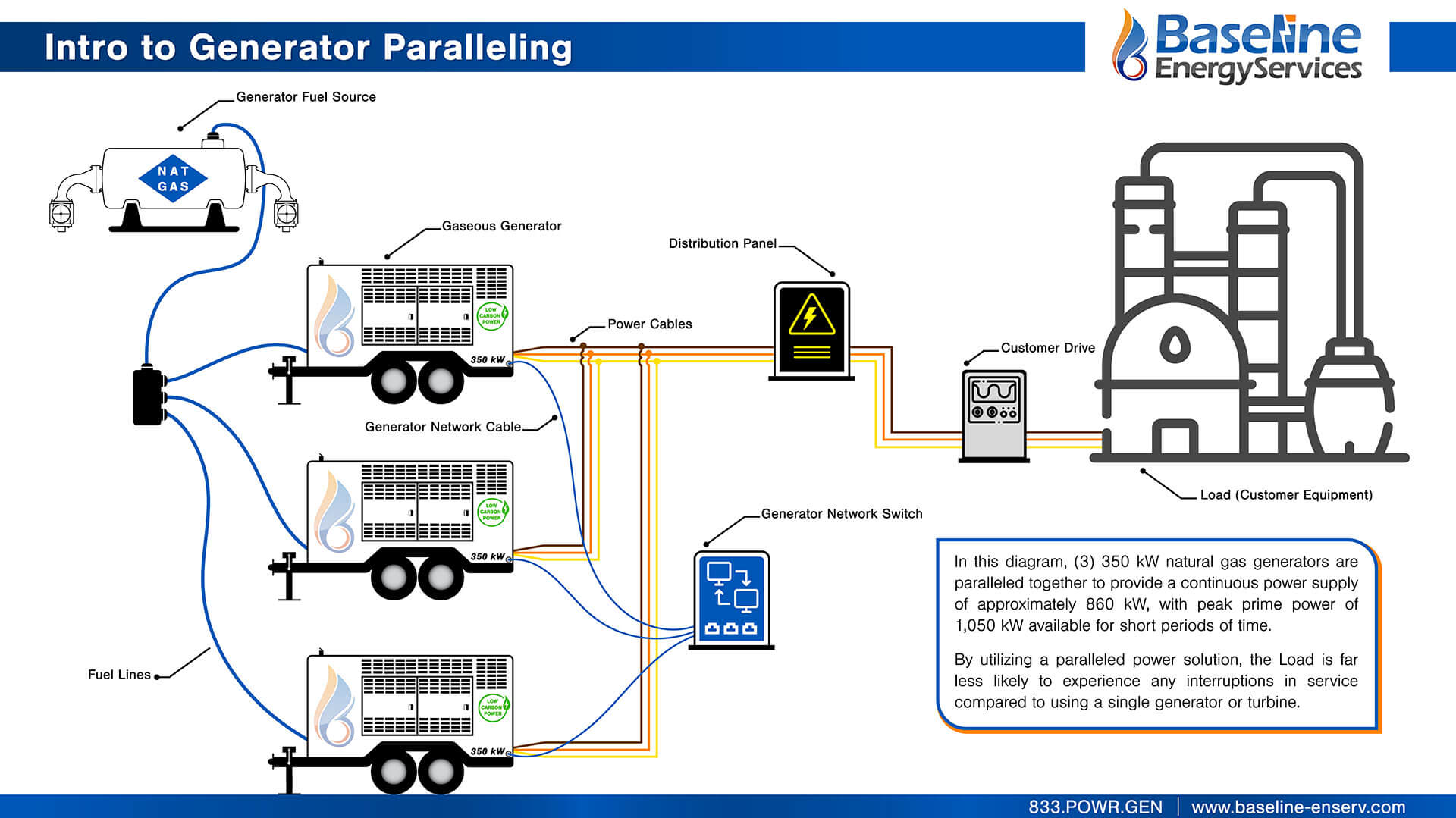The Advantages of Paralleling
Moving on from the technicalities, let’s take a look at the advantages of a system of generators operating in parallel.
Increased efficiency with optimum load sharing: The engines of generators are usually designed to run with highest efficiency at 75 to 80% of rated prime power. Practically, load does not stay constant and changes throughout the day. Any generator, be it a diesel generator or a gaseous generator, experiences a loss in efficiency when it is not running at optimum load, and diesel generators particularly are highly susceptible to wet stacking when operating at 30% or lower capacity. Baseline’s gaseous generator paralleling systems manage load variations very well, enabling generators to maintain operation at 75 to 80% of rated load capacity, maximizing fuel efficiency, reducing the cost and frequency of preventative maintenance, and autonomously responding to the power needs of customer equipment.
Redundancy and increased reliability: Parallel systems are designed to prioritize the redistribution of critical loads among other generators in the system if one of the generators fails. This increases the overall reliability of the system and ensures continuity of power.
Flexible system, no-shutdown maintenance: Power is not interrupted even during maintenance. With a parallel configuration of N+1 generator, one generator can be taken entirely offline for maintenance, while the rest of the generators temporarily increase their collective output to handle the load.
Scalable system: A system of parallel generators has the advantage of scalability. The power capacity can be gradually increased as your operations grow, and with Baseline’s power-as-a-service business model, there is zero capital investment required of our customers. When more power is needed, additional generators can easily be added to the existing parallel system. Such parallel systems accept a maximum of 32 generators in sync at once.
Lower cost: It is also said that generation costs increase with generator size and is significantly higher at ratings above 600KW. This is because there is a greater market for smaller generators and therefore, they are produced in a relatively large quantity, which means lower costs. Thus, using smaller generators is less expensive than using a single larger generator.

